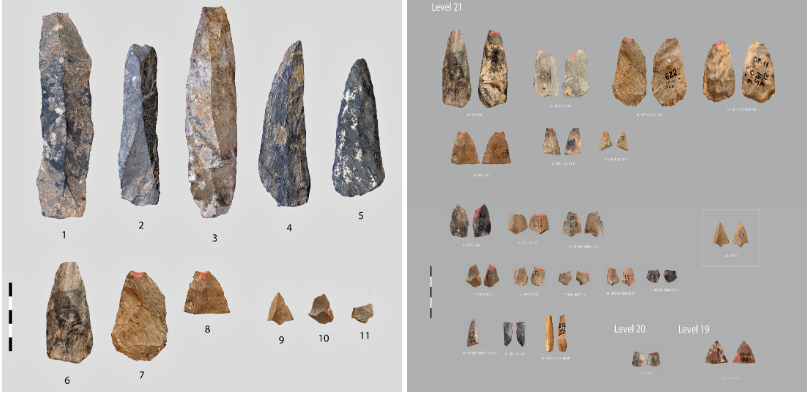Archaeological Discovery in Uzbekistan: The World’s First Bows and Arrows, Around 80,000 Years Ago

As a result of many years of research at the Obi-Rakhmat archaeological site in Uzbekistan, small triangular objects resembling arrowheads have been discovered. The findings of this study were published in the journal PLOS One. Researchers from the National Center of Archaeology of the Academy of Sciences of Uzbekistan have long been conducting excavations in the Stone Age cave of Obi-Rakhmat.
The stone artifacts unearthed from this cave over the years were re-analyzed in 2024 by scientists from the center in cooperation with French and Russian archaeologists.
It was noted that the comparison of these stone objects with items found in other parts of the world showed that they were indeed arrowheads. Most importantly, the oldest such items elsewhere were made 25,000 years later than those originating from Obi-Rakhmat.
Thus, today the international scientific community confirms and acknowledges that the first bows and arrows in human history were created around 80,000 years ago and discovered by archaeologists on the territory of Uzbekistan.
The researchers concluded that these objects are arrowheads, about 80,000 years old. This conclusion is based on wear traces on the surface of the stone triangles, their shape, and other characteristics.
Until now, it was believed that bows and arrows appeared in Eurasia only during the Upper Paleolithic (40,000–12,000 years ago), while in Africa modern humans had already used them in the Middle Paleolithic (70,000–80,000 years ago), and such finds were considered characteristic exclusively of ancient African peoples.
However, the new analysis of artifacts from Obi-Rakhmat, located in the western foothills of the Tien Shan in northeastern Uzbekistan, challenges these assumptions.
This represents one of the oldest pieces of evidence of long-distance (non-contact) hunting outside Africa. Other ancient traces of the use of bows and arrows were discovered a few years ago in France.







